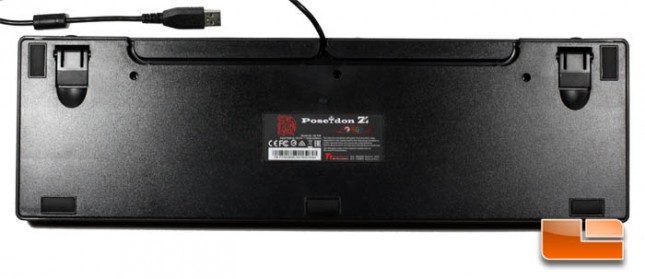Tt eSPORTS Poseidon Z RGB Mechanical Gaming Keyboard Review
Looking Around the Poseidon Z RGB
Like the original Poseidon Z, the Poseidon Z RGB is a full-layout keyboard with dimensions of 17.3 x 5.2 x 1.5 in (LxWxH) / 440 x 133 x 37mm. The minimalist appearance is broken by rubber bumpers on the side opposite from the user, the Tt eSPORTS logo on the spacebar and the top right next to the Windows/Ctrl Lock button, and the RGB lighting.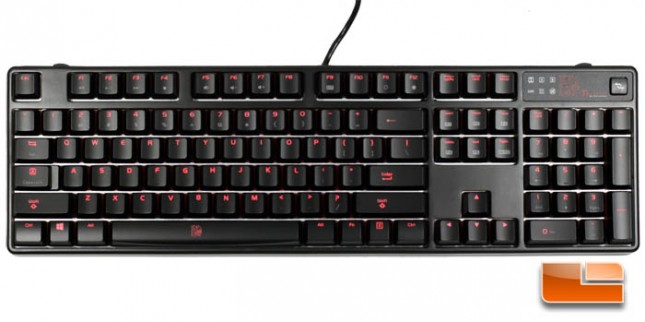
The Poseidon Z RGB uses clicky Blue or tactile Brown Kailh mechanical switches with RGB LEDs. We have the Brown switch version for this review. These switches are clones of the Cherry MX mechanical switch and have been available since Cherry’s patent on the design expired. As such these Kailh switches are allowed to be close reproductions down to even the reliability Thermaltake has backed its Poseidon Z family of keyboards with generous 5 year warranties.
Unlike the Cherry MX RGB switch which uses surface mount RGB LEDs placed below clear plastic switches, these Kailh Side Full-Color Light-Emitting Keyboard Switches have RGB LED lights built into the switch housing.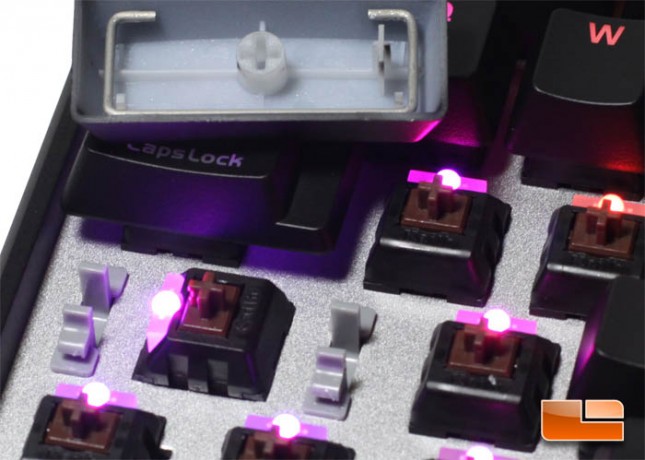
This is KaiHua’s own patented solution to the RGB mechanical switch. The Poseidon Z RGB shines brighter than most of the other RGB keyboards we have seen possibly because the LED is closer to the keycap.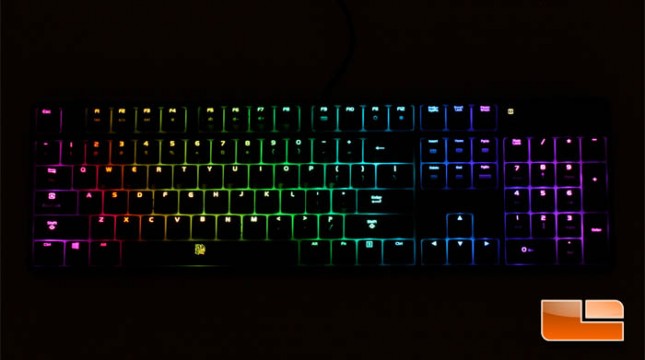
Even under bright lighting, the colors from the LED under the keycap are just about visible.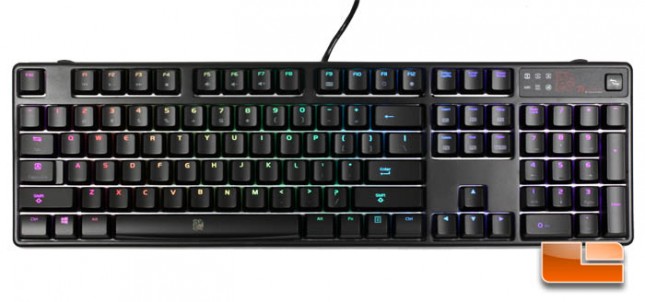
Under more moderate lighting, the colors from the LEDs flooding onto the silvery backplate are visible.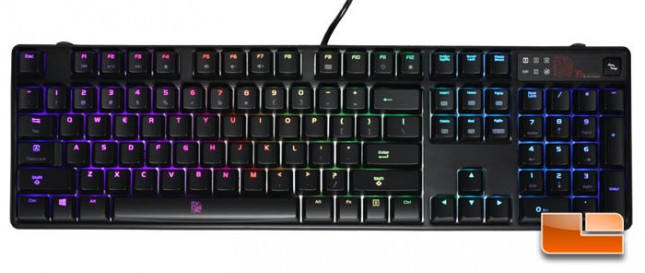
F1 through F7 double as media control keys on the Poseidon Z RGB which are triggered when pressed in conjunction with the Fn key.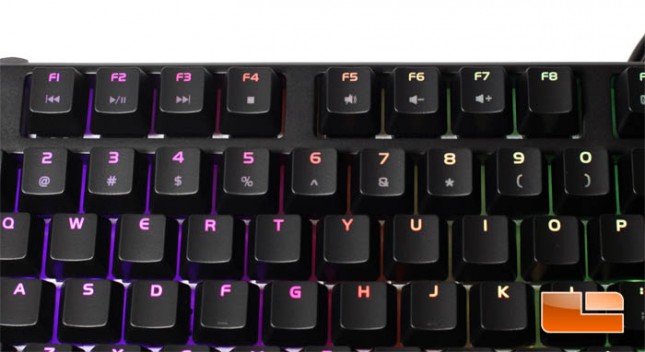
F11 and F12 alternatively function as LED brightness control. F9 doubles as Macro Record and the five profile keys are paired with the upper set of navigational keys. The exception is PageDown which doubles as the toggle for 6-key rollover and N-key rollover.
There are six white indicator lights: the three usual NumLock, CapsLock, and ScrollLock indicators, as well as Macro Record, N-key rollover, and Windows lock.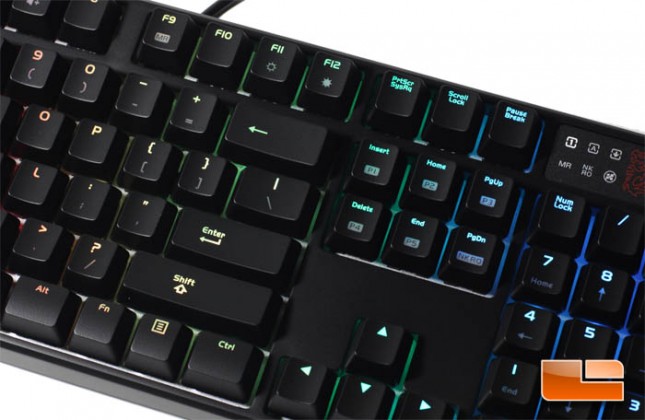
Since the LED backlights are placed to one side of the mechanical switch, it is much harder to make out the lettering designating the alternate function of some of the keys.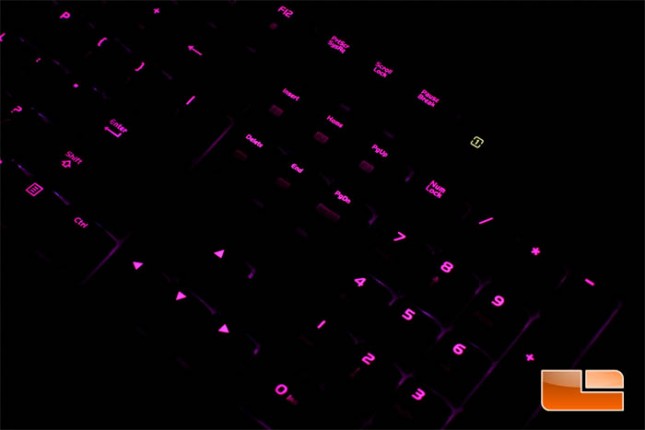
Here using the Keyboard Ghosting Demonstration from Microsoft, we see N-key rollover is working as expected. The original Poseidon Z was limited to having six keys being pressed simultaneously.
Looking under to the bottom of the keyboard, we see five gripping feet located near the four corners and one in the middle on the side closest to the user. Near where the USB cable comes out of the keyboard is a recessed groove that can fit the keyboard’s own 6 ft (1.8 m) long USB cable or a cable from another device to manage cords.